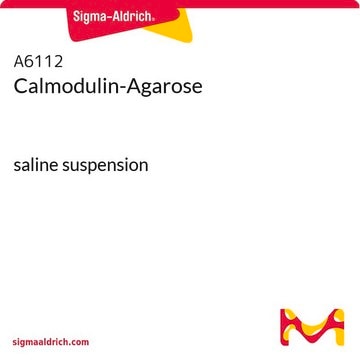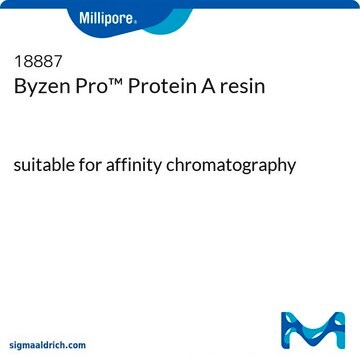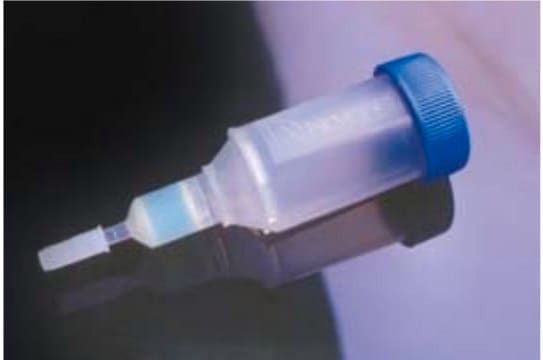GE17-0529-01
Calmodulin-Sepharose™ 4B
Cytiva 17-0529-01, pack of 10 mL
Synonym(s):
Calmodulin Affinity Resin, Calmodulin-Sepharose
About This Item
Recommended Products
ligand
calmodulin
packaging
pack of 10 mL
manufacturer/tradename
Cytiva 17-0529-01
storage condition
(20% Ehtanol)
matrix
4% agarose
particle size
45-165 μm
average diameter
90 μm
cleaning in place
4-9
working range
4-9
storage temp.
2-8°C
General description
Calmodulin is a highly conserved regulatory protein found in all eukaryotic cells.This protein is involved in many cellular processes such as glycogen metabolism,cytoskeletal control, neurotransmission, phosphate activity and control of NAD?/NADP? Calmodulin binds proteins principally through their interactions with hydrophobic sites on its surface. These sites are exposed after a conformational change induced by the action of Ca2+ on separate Ca2+-binding sites. The binding of enzymes may be enhanced if the enzyme substrate is present and enzyme-substratecalmoldulin-Ca2+ complexes are particularly stable.
Features and Benefits
- For single-step purification of native calmodulin-binding proteins
- Suitable for tandem affinity purification (TAP) of protein complexes
- Purification of calmodulin-regulated proteins from all eukaryotic cells
Storage and Stability
Analysis Note
Legal Information
Signal Word
Warning
Hazard Statements
Precautionary Statements
Storage Class Code
3 - Flammable liquids
Certificates of Analysis (COA)
Search for Certificates of Analysis (COA) by entering the products Lot/Batch Number. Lot and Batch Numbers can be found on a product’s label following the words ‘Lot’ or ‘Batch’.
Already Own This Product?
Find documentation for the products that you have recently purchased in the Document Library.
Articles
This page shows how to remove serine proteases, e.g. thrombin and trypsin, and zymogens from recombinant products using HiTrap Benzamidine FF and Benzamidine Sepharose 4 Fast Flow from Cytiva.
This page shows how to convert between flow velocity and volumetric flow rate in affinity chromatography of antibodies.
Protocols
This page shows how to purify ATPases, adenylate cyclases, protein kinases, phosphodiesterases and neurotransmitters by affinity chromatography using Calmodulin Sepharose 4B from Cytiva.
This page provides information about different pull-down assays for the further isolation of multiprotein complexes to identify their components with products from Cytiva.
This page shows how to perform column packing and preparation for affinity chromatography when using Tricorn™ or XK columns available from Cytiva.
This page shows how to prepare samples for purification with affinity chromatography.
Related Content
Investigate in vitro protein-protein interactions with pull-down assays, utilizing affinity, GST pull-down, TAP, and co-immunoprecipitation methods.
Investigate in vitro protein-protein interactions with pull-down assays, utilizing affinity, GST pull-down, TAP, and co-immunoprecipitation methods.
Investigate in vitro protein-protein interactions with pull-down assays, utilizing affinity, GST pull-down, TAP, and co-immunoprecipitation methods.
Investigate in vitro protein-protein interactions with pull-down assays, utilizing affinity, GST pull-down, TAP, and co-immunoprecipitation methods.
Our team of scientists has experience in all areas of research including Life Science, Material Science, Chemical Synthesis, Chromatography, Analytical and many others.
Contact Technical Service








